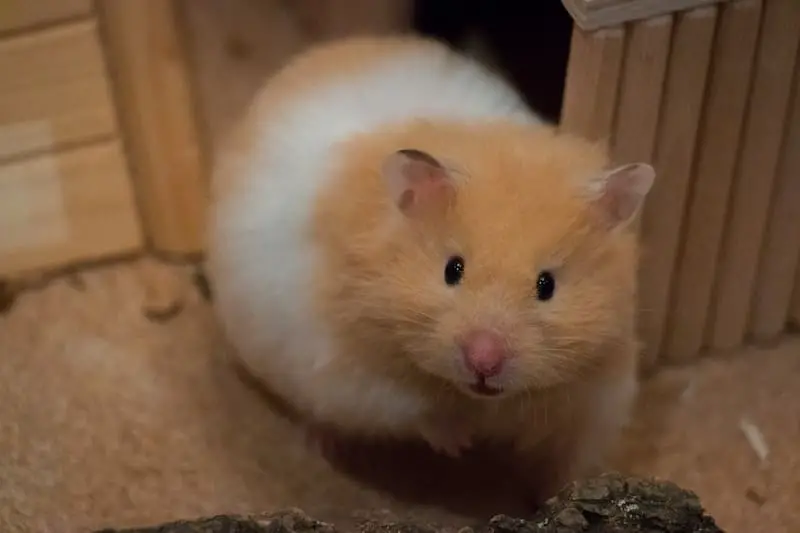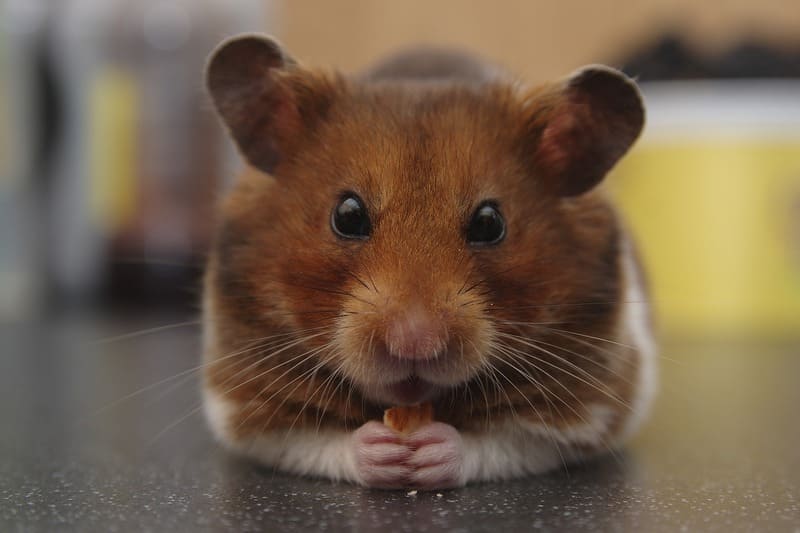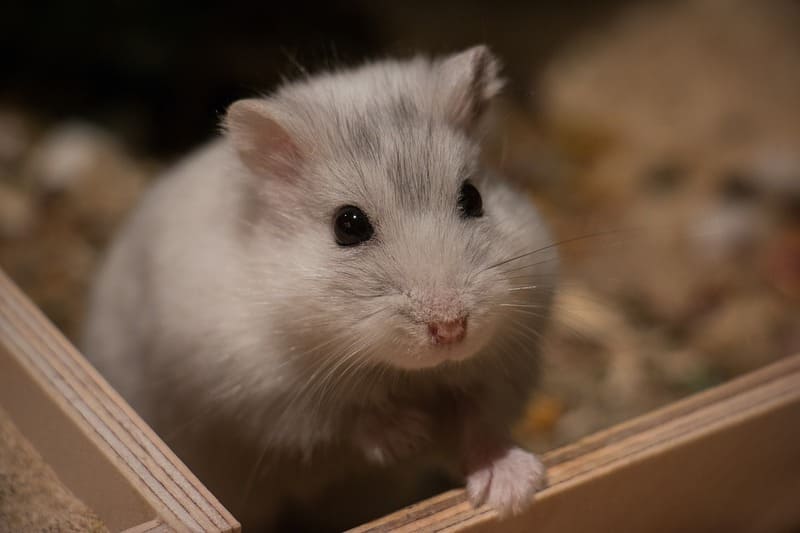The question of whether hamsters are nocturnal animals is one that has intrigued pet owners and researchers for many years. These small, furry creatures have become popular as household pets, and understanding their activity patterns is crucial for providing them with proper care and enrichment. In this comprehensive exploration, we will delve into the world of hamsters to determine if they are truly nocturnal animals, shedding light on their behavior, physiology, and the factors that influence their activity patterns.

Hamsters: A Brief Introduction
Before we delve into the discussion of whether hamsters are nocturnal, it’s essential to understand some fundamental aspects of these fascinating creatures. Hamsters are small rodents belonging to the Cricetidae family, which includes over 18 species. However, when we talk about hamsters as pets, we usually refer to the Syrian or Golden Hamster (Mesocricetus auratus) and a few other popular species such as the Dwarf Hamster (Phodopus spp.) and the Roborovski Hamster (Phodopus roborovskii).
Hamsters are native to arid regions of Europe, Asia, and the Middle East, and they have adapted to living in semi-desert and desert environments. These adaptations are crucial to understanding their activity patterns and behavior.
Defining Nocturnal Behavior
To determine whether hamsters are nocturnal animals, it’s essential to define what it means for an animal to be nocturnal. Nocturnal animals are those that are primarily active during the night and rest during the day. Their behavior is synchronized with the natural day-night cycle, which is regulated by the light-dark cycle.
In contrast, diurnal animals are active during the daytime and rest at night. Crepuscular animals are most active during dawn and dusk, while cathemeral animals may be active during both day and night, depending on various factors like food availability, predation risk, or environmental conditions.
The Behavior of Hamsters
Now that we have a clear understanding of what it means to be nocturnal, let’s explore the behavior of hamsters to determine where they fit into these categories.
Natural Habitat
Hamsters’ natural habitat provides some clues about their activity patterns. As mentioned earlier, they originate from arid regions, where daytime temperatures can be scorching. To avoid the heat and conserve energy, these creatures have evolved to be crepuscular, which means they are most active during the cooler hours of dawn and dusk. During these times, they forage for food and engage in other activities.
Pet Hamsters
When it comes to pet hamsters, their activity patterns can vary depending on several factors, including species, individual temperament, and the environment in which they are kept. Syrian hamsters, for instance, are typically more crepuscular, with some activity during the evening and early morning hours. In contrast, Dwarf hamsters, including the Roborovski hamster, may be more active during the nighttime.
It’s important to note that even though hamsters are often described as crepuscular, they can adapt to their owner’s schedule to some extent. Hamsters are known to be crepuscular by nature, but with proper training and consistency, they can adjust their activity patterns to be more diurnal, which can be beneficial for owners who prefer to interact with their pets during the day.
Observations and Research
Many hamster owners and researchers have conducted observations and studies to better understand hamster behavior. Some common observations regarding hamster activity patterns include:
- Nighttime Activity: Many hamster owners report that their pets are most active at night, often running on hamster wheels, exploring their cages, and foraging for food during the dark hours. This nighttime activity suggests a degree of nocturnality in their behavior.
- Dusk and Dawn Activity: Hamsters are often most active during dawn and dusk, which aligns with crepuscular behavior. This is when they are naturally inclined to engage in activities such as digging, running, and exploring.
- Daytime Rest: During the daytime, hamsters are typically less active, often retreating to their nests or burrows to sleep and rest. This is consistent with the behavior of nocturnal or crepuscular animals.
- Response to Light: Hamsters are known to have sensitive eyes and can be easily startled by bright light. This aversion to intense light supports the idea that they are adapted for low-light conditions, typical of nocturnal or crepuscular animals.
- Food Foraging: Hamsters, in both the wild and captivity, exhibit food-hoarding behavior, which is a strategy used to store food for future consumption. They may collect and store food during their active hours, which aligns with their natural activity patterns.
- Variability: It’s essential to note that there is considerable variability in hamster behavior among different species and individual animals. Some hamsters may be more active during the day, while others are predominantly active at night.
- Environmental Factors: The light-dark cycle and the availability of food can also influence hamsters’ activity patterns. In captivity, hamsters may adjust their behavior based on the presence of artificial lighting and the timing of food provision.

Physiological Adaptations
Hamsters exhibit several physiological adaptations that support their crepuscular and potentially nocturnal behavior:
- Sensory Adaptations: Hamsters have excellent senses of smell and hearing, which help them navigate and locate food in low-light conditions. Their sensitive whiskers and keen sense of touch are also essential for their activities during dim light.
- Nocturnal Vision: While hamsters are not true nocturnal animals, they possess relatively good night vision compared to some diurnal animals. This enhanced night vision is due to the large size of their eyes, which allows them to gather more light in low-light conditions.
- Fur and Coat Color: Hamsters often have fur colors that provide camouflage in their natural habitat, helping them avoid predators during their active periods at dawn and dusk. This fur coloration may also contribute to their activity patterns.
- Metabolic Adaptations: Hamsters have a metabolism adapted to conserve energy during the day when temperatures are high. Their activity patterns are aligned with periods of lower energy expenditure, helping them survive in their natural environment.
The Influence of Domestication
The behavior of pet hamsters may differ from their wild counterparts due to domestication. Over generations, selective breeding for specific traits, such as tameness and adaptability to human care, may have influenced their activity patterns.
Domestic hamsters may exhibit more flexibility in their behavior, adapting to their owners’ schedules and the presence of artificial lighting. Some may become more diurnal, as they are more likely to be active when their human caregivers are present.
Factors That Affect Hamster Activity Patterns
Several factors can influence the activity patterns of hamsters, making it challenging to generalize their behavior as strictly nocturnal or crepuscular:
- Species: Different species of hamsters may have varying activity patterns. For example, Syrian hamsters are typically more crepuscular, while Dwarf hamsters may be more nocturnal.
- Individual Variation: Just like humans, individual hamsters have unique personalities and preferences. Some may be more active during the day, while others are night owls.
- Age: Young hamsters are generally more active and playful than older individuals. As hamsters age, their activity levels may decrease.
- Health: Health issues or stress can affect a hamster’s activity. A sick or stressed hamster may be less active and exhibit unusual behavior.
- Light and Environment: The presence of artificial light in the hamster’s habitat can influence their activity patterns. A consistently lit room may encourage hamsters to be more diurnal.
- Feeding Schedule: Hamsters are known to adjust their activity patterns based on their feeding schedule. If they are regularly fed during the day, they may become more active during daylight hours.
How to Determine Your Hamster’s Activity Pattern
If you’re unsure about your hamster’s activity pattern, there are several ways to determine it:
- Observation: Spend time watching your hamster and taking notes about when they are most active. Pay attention to their behavior during different times of the day and night.
- Consistency: Establish a regular routine for feeding and interaction with your hamster. This can help you gauge when they are most active and when they tend to rest.
- Lighting Conditions: Pay attention to the lighting conditions in your hamster’s habitat. If your room is consistently lit, it may encourage diurnal behavior. Conversely, providing a dark and quiet environment during the day may promote more nocturnal or crepuscular behavior.
- Hamster Wheel Activity: Hamsters often use exercise wheels, and they may do so more frequently during their active hours. If your hamster is using their wheel at night, it may suggest nocturnal behavior.
- Burrowing and Nesting: Observe when your hamster is most active in building or modifying their burrow or nesting area.
Remember that hamsters are adaptable creatures, and their activity patterns can change over time. It’s essential to provide them with a comfortable and stimulating environment that encourages natural behaviors.

The Role of Play and Enrichment
Regardless of whether your hamster is primarily nocturnal or crepuscular, providing them with opportunities for play and enrichment is crucial for their well-being. Hamsters are intelligent and active animals that require mental and physical stimulation.
Here are some ways to enrich your hamster’s life:
- Exercise Wheel: Most hamsters enjoy running on a wheel. Make sure the wheel is appropriately sized for your hamster to prevent back injuries.
- Toys: Offer a variety of toys, such as tunnels, chew toys, and puzzle feeders, to keep your hamster mentally and physically engaged.
- Hiding Places: Hamsters appreciate hiding spots or burrows in their habitat. Provide them with bedding materials to create cozy nests.
- Climbing Opportunities: Consider adding platforms, ladders, or tubes for your hamster to climb on or explore.
- Food Enrichment: Hide treats or pieces of fresh vegetables in different areas of their habitat to encourage foraging.
- Rotating Toys: Change the toys and accessories in your hamster’s habitat regularly to prevent boredom.
- Social Interaction: Spend time interacting with your hamster during their active hours, but be gentle and patient, as hamsters may take time to build trust.
- Safe Exploration: Allow your hamster to explore a secure playpen or a hamster-proofed room under your supervision for additional mental stimulation.
Conclusion: Are Hamsters Nocturnal?
In conclusion, the activity patterns of hamsters can vary among different species and individuals. While hamsters are often described as crepuscular, exhibiting increased activity during dawn and dusk, they may also be active during the night, which aligns with nocturnal behavior.
The crepuscular or nocturnal nature of hamsters is influenced by their natural habitat, physiological adaptations, and the presence of artificial lighting and food availability. However, domesticated hamsters can exhibit a degree of flexibility in their activity patterns, adapting to their owners’ schedules and the environment in which they are kept.
Ultimately, whether hamsters are considered nocturnal or crepuscular, providing them with a stimulating and comfortable environment is essential for their well-being. Hamsters are intelligent, active animals that benefit from mental and physical enrichment, regardless of their activity pattern. Understanding your individual hamster’s preferences and observing their behavior can help you tailor their care to ensure they lead happy and healthy lives as your beloved pets.
